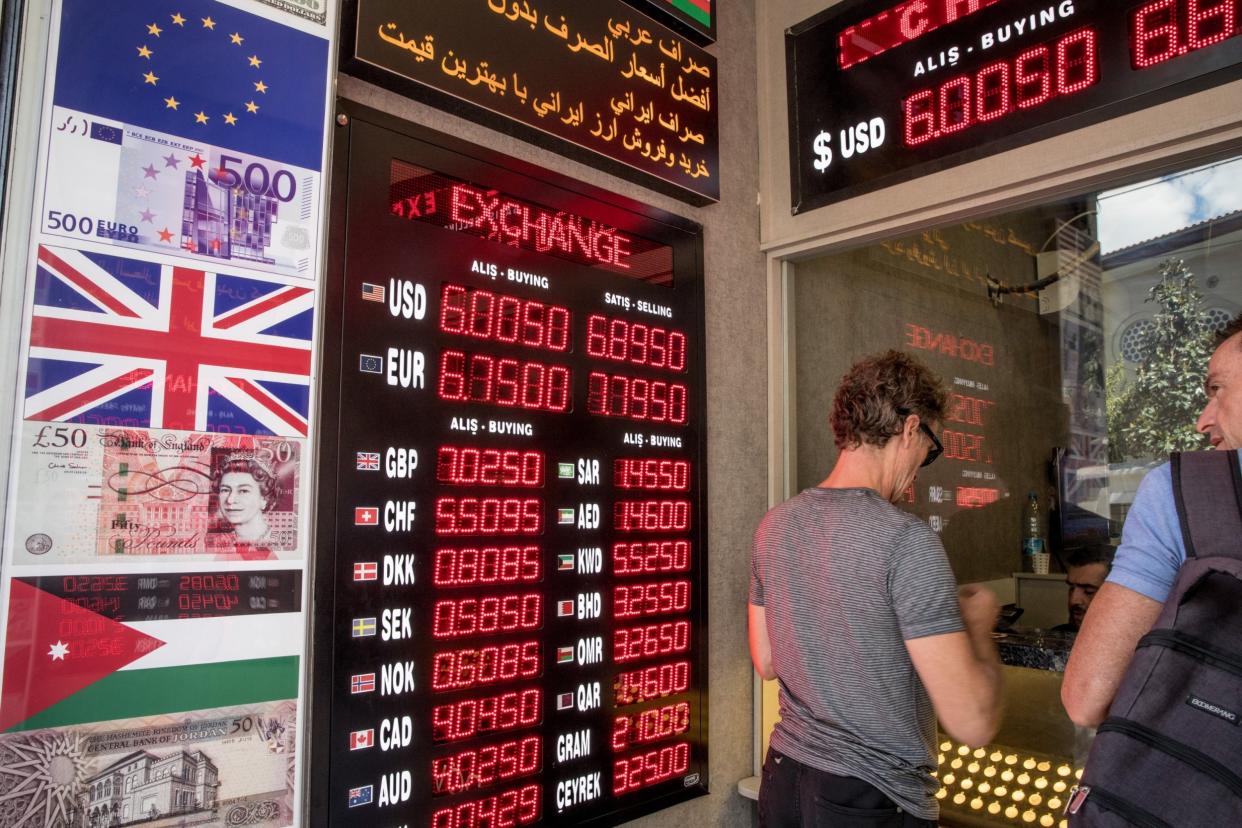Kallum Pickering: Jitters over a hard Brexit have left sterling in the shade

The weather is not the only reason to holiday in the UK this summer. You can tell a lot about what markets think about a country’s economy just by looking at the value of its currency. The trend for sterling since the Brexit vote in June 2016 tells a sobering tale.
Versus the US dollar, sterling currently trades at around $1.28, 12% lower than its May 2016 level. Sterling has lost 13% versus the euro over the same period. One pound now gets you €1.13. Along with the uncharacteristically hot weather, these are as good reasons as any to stay in the UK for the summer holidays this year.
Exchange rates move in line with financial markets’ changing views about the relative long-term economic growth prospects of countries. Economies that are expected to do well attract high inflows of international capital, which drives currencies up.
Before the Brexit vote, the UK had enjoyed top-of-the-league growth among major advanced economies. This showed up in sterling, which had been gradually recouping the losses suffered during the financial crisis. The relatively quick recovery enticed investors to send their money to the UK.
Markets conclude that Brexit will lower the speed at which the UK will grow in the long term. So far at least, the economic data since the Brexit vote has supported this view. The UK economy grew by 1.7% last year. Without Brexit, amid the strong global backdrop, growth would have probably been nearer 3%. This year, annual growth will struggle to hit 1.5%.
Although the UK has outperformed the most pessimistic forecasts since the referendum, it has nonetheless slipped down the G7 growth league. As the US and the eurozone have strengthened, the UK has weakened.
At the moment, the UK is probably the most unloved of all major advanced markets. The risk of a no-deal hard Brexit — say, a 20% probability — is weighing heavily on sterling. But chances are that, after noisy negotiations later this year, the UK and EU will secure a deal that covers trade in goods and keeps the Irish border open.
If a hard Brexit is avoided, the most significant risk to the economic outlook will disappear. Then, investors will probably take a more favourable view on the UK. This will push sterling higher over time.
After all, the UK economy is not in a bad shape. The post-financial crisis upswing is maturing nicely: the expansion is in its ninth year; employment is at a record high and real wages are edging up; the Bank of England is finally feeling confident enough to gradually normalise monetary policy; and the fiscal deficit is slowly edging back towards a safe level.
Whether the UK can eventually resume its place at the top of the growth league for advanced countries and re-establish itself as a destination of choice for global investors is a different matter. Even if the UK opted for a very soft Brexit (unlikely), it is hard to see how the economy can fully escape the grip of populism any time soon.
Markets know the UK will have to wait until at least the next election in 2022 to shed the economic risks linked to a potential Labour government led by far-left Jeremy Corbyn. Labour will have to lose the next election before the Corbyn risk can disappear.
For a long time yet then, whenever markets try to decide an appropriate price for sterling, it will be politics first, economics second. This is a major shift for the UK, which for so long had been viewed as a bastion of political stability and a safe haven in risky times. Still, the UK’s rapid fall from grace since voting to leave the EU in June 2016 may partially reverse if and when the UK and EU strike half a deal this year.
At that point, the UK would be set for a little rebound in economic growth in 2019 and 2020.
Once investors finally let go of the hard Brexit risk, probably around the turn of the year, sterling could strengthen by 5% to 10% against its major peers. Call it a little no-hard-Brexit relief rally.
As another summer as good as this one is highly unlikely, a stronger pound will be welcome next year when Brits may have to go abroad again to get all the sun they want.
Kallum Pickering is UK economist at Berenberg

 Yahoo News
Yahoo News 
